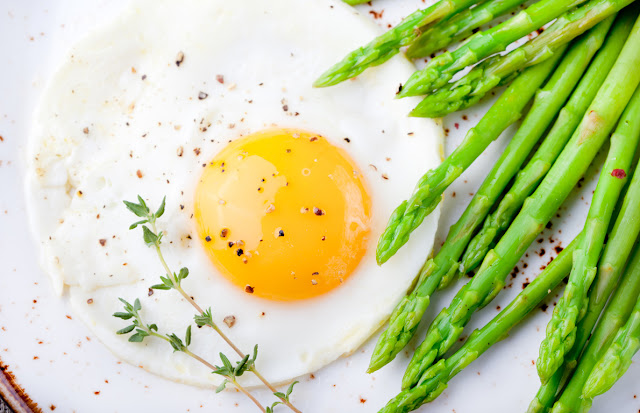不幸患上糖尿病,你的菜单中哪些是最佳和最糟糕的选择?
在人们的观念中,乙型糖尿病的发病人群通常年纪比较大,至少40岁以上的人容易发病。然而,现在越来越多的年轻人加入了糖尿病行列。据了解,目前糖尿病的患病年龄正逐年下移,30多岁患病的患者非常多见,20多岁就发病的患者也不少,糖尿病年轻化问题日益凸显。
与生活习惯息息相关
现在生活条件越来越好,很多人从小就不注意控制饮食,出来工作后“吃多、动少、久坐”更是加剧了脂肪的堆积。此外,城市人都属于外食族,在外用餐不容易控制食物份量与热量,加上应酬多、压力大,饮食不规律,要么不吃不喝,要么暴饮暴食,胰岛负担过重,总有一天会“失控”,造成肥胖,进而引发乙型糖尿病。
你所选择的食物直接影响你的血糖控制
要掌控好血糖值,并不需要完全禁食某一种食物,重点是要适可而止、凡事不过量。要是你真的没法控制自己的欲望,一吃就要吃到够吃到过瘾,那最好还是选择不碰那些食物。
下次当你开饭时,把蔬果填满碟子的一半,然后再选择全麦、坚果、瘦肉和低脂乳制品,尽可能减少糖份摄取。
以下按营养分类,给你提供一个在“安全区域里”的食物清单作为参考。
淀粉
你的身体需要碳水化合物,但你必须作出明智的选择。最佳选择:全麦,比如糙米、五谷米、麦片、小小米等;烤番薯;全麦(不加糖或少糖)制品。
最坏选择:精制米粉制品,比如白面包、饼干、蛋糕、酥饼等;炸薯条;白米饭。
蛋白质
你有很多选择,包括牛、鸡、鱼、猪、火鸡、海鲜、豆类、芝士、鸡蛋、坚果和豆腐。吃肉要选择瘦肉、去皮。
最佳选择:植物性蛋白,好比豆类、坚果、籽或豆腐;鱼类和海产;鸡和其他禽类(尽量选择胸肉);鸡蛋和低脂乳制品。
最坏选择:油炸肉类或豆腐、培根、芝士、用猪油烹煮的所有豆类。
乳制品
最佳选择:选择低脂乳制品,比如1%或脱脂牛奶、低脂酸奶、酸奶油等。
最坏选择:全脂牛奶、普通酸奶、雪糕等。
脂肪
最佳选择:植物油,比如葡萄籽油、橄榄油、玉米油。此外,坚果、籽、牛油果、三文鱼和鲭鱼所提供的油脂,都是好的脂肪。最坏选择:所有含反式脂肪的人造食品,比如植物性牛油,以及含有饱和脂肪的食物,如:肥猪肉。
饮料
最佳选择:白开水、茶、低浓度啤酒、少量酒、咖啡(黑,或加少量糖和低脂奶)。最坏选择:汽水、普通啤酒、混合糖酱的甜酒、甜茶、加奶油的咖啡、巧克力饮料、能量饮。
蔬菜
尽可能多吃!你将会获得更多纤维和少量油脂和盐(别加太多),切记,玉米和马铃薯属于淀粉类。最佳选择:新鲜蔬菜,生食或蒸、烤,都可以;尽可能在一天内多吃不同颜色的蔬菜,除了绿色蔬菜,还可以加入红色萝卜或甜椒、白色洋葱,或紫色茄子。
最坏选择:罐头蔬菜(高钠);用大量牛油或芝士烹煮调味的蔬菜、勾太多芡或汤汁的蔬菜;腌制蔬菜。
水果
最佳选择:新鲜水果、不含糖或低糖果酱最坏选择:罐头水果糖水、普通甜果酱、糖渍水果、市售含糖果汁。
天然中草药配方Gluco8,远离甜蜜陷阱
Gluco8以药食两用的天然植物桑叶、菊花和山药为主要原料,富含桑叶多糖、桑叶生物碱(DNJ)等功效成份。
Gluco8参考传统中医药学对“消渴症”的治疗经验,以清朝古方“桑菊饮”为基础,运用现代科学技术研发而成,将桑叶、菊花、山药三种药食两用天然植物配伍使用,达到益气养阴、生津止渴调理的功效,有效减轻和改善“三多一少”:即多饮、多食、多尿和消瘦等高血糖症状。
功效:
- 其桑叶多糖能促进胰岛β细胞分泌胰岛素,加强细胞对葡萄糖的利用,增加肝糖原合成
- 桑叶DNJ能有效抑制双糖在小肠部位的分解与吸收,减缓餐后血糖的急剧上升,减轻餐后持续高血糖对血糖偏高者的危害性
- 有效调节血糖
认证:
- 2014台湾“SNQ品质标章”
- 2007年“中国保健品50大公信力产品”、“广东省高新技术产品”
- 2004年第四届中国国际保健节“科技进步奖”
更多详情,请游览infinitus官方网站
Diagnosed with Diabetes, What
is the best and the worst food for me?
To
many of us, diabetes always related to seniors, only those 40s and above need
to be extra cautious on their diet, thus we live carefree thinking diabetes is
something we only need to worry when we are 40 years old, until one day, your
cousin has been diagnosed with diabetes at the age of 28!
This
is no joke, there is a significant increment in the numbers of youngsters
diagnosed with type II diabetes. The bad diet and unhealthy lifestyle is the
main reason youngster has been exposed to the risk of diabetes. While not
everyone with type II diabetes is overweight, obesity and lack of physical
activity are two of the most common causes of this form of diabetes.
Your
food choices matter a lot when you've got diabetes. Some are better than
others.
Nothing
is completely off limits. Even items that you might think of as “the
worst" could be occasional treats -- in tiny amounts. But they won’t help
you nutrition-wise, and it’s easiest to manage your diabetes if you mainly
stick to the “best” options.
As
you fill your plate at each meal, here’s a helpful guideline to keep in mind:
fill half your plate with non-starchy vegetables. Round out the meal with other
healthy choices — whole grains, nuts and seeds, lean protein, low-fat dairy,
and small portions of fresh fruits and healthy fats. Sugar should be limited.
Here’s
what you need to know about choosing the best options from each group.
Starches
Best
choices: Whole grains, such as
brown rice, oatmeal, quinoa, millet, or amaranth baked sweet potato. Items made with whole grains and no (or very little) added
sugar.
Bad choices: Processed grains, such as white rice or
white flour, cereals
with little whole grains and lots of sugar, white bread, french
fries, pastries.
Protein
Best
Choices: Plant-based proteins,
such as beans, nuts, seeds, or tofu, fish and seafood,
chicken and other poultry (choose the breast meat if possible.), eggs and low-fat dairy. If you eat meat, keep it
low in fat. Trim the skin off poultry. Try
to include some plant-based protein from beans, nuts, or tofu, even if you're
not a vegetarian or vegan. You’ll get nutrients and fiber that aren’t in animal
products.
Worst
Choices: Fried meats, pork bacon, regular cheeses, deep-fried fish and tofu, beans prepared with lard.
Dairy
Best
Choices: 1% or skim milk, low-fat yogurt, low-fat cottage cheese or
low-fat/nonfat sour cream.
Worst
Choices: Whole milk, regular yogurt, cottage
cheese, sour cream, regular
ice cream.
Fats & Oils
Best
Choices : Natural
sources of vegetable fats, such as nuts, seeds, or avocados (high in calories,
so keep portions small), foods
that give you omega-3 fatty acids, such as salmon, tuna, or mackerel, plant-based oils, such as
canola, grapeseed, or olive oils.
Worst
Choices: Anything with artificial trans-fat
in it. It's bad for your heart. Check the ingredient list for anything that’s
“partially hydrogenated,” even if the label says it has 0 grams of trans fat. Big portions of saturated fats, which
mainly come from animal products. Ask
your doctor what your limit should be, especially if you have heart disease as
well as diabetes.
Drinks
Best
Choices : Water, unsweetened tea (add a slice
of lemon), light beer,
small amounts of wine, or non-fruity mixed drinks, coffee, black or with added low-fat
milk and sugar substitute.
Worst
Choices: Sodas, regular beer, fruity mixed drinks,
dessert wines, sweetened
tea, coffee with sugar
and cream, flavored
coffees and chocolate drinks,
energy drinks.
Vegetables
Load
up! You’ll get fiber and very little fat or salt (unless you add them). Remember, potatoes and corn count as carbs.
Best
choices: Fresh veggies, eaten raw
or lightly steamed, roasted, or grilled. Go for a variety of colors: dark greens, red or orange (think
of carrots or red peppers), whites (onions) and even purple (eggplants).
Worst
choices: Canned vegetables with
lots of added sodium, veggies
cooked with lots of added butter, cheese, or sauce, pickles, if you need to limit sodium
-- otherwise, pickles are okay.
Fruits
They
give you carbohydrates, vitamins, minerals, and fiber. Most are naturally low
in fat and sodium. But they tend to have more carbs than vegetables do.
Best
choices: Fresh fruit, plain frozen fruit or fruit
canned without added sugar, sugar-free
or low-sugar jam or preserves.
Worst
choices: Canned fruit with heavy
sugar syrup, regular
jam, jelly, and preserves (unless you have a very small portion), fruit punch, fruit drinks,
fruit juice drinks.
Gluco8 – a natural TCM formulation, keeps you away from high blood
glucose
Gluco8 is formulated from edible
herbs with medicinal values such as mulberry leaves, chrysanthemum and Chinese
yam which are rich with active components, like mulberry polysaccharides and
mulberry alkaloids (DNJ).
Benefits:-
- Polysaccharides from mulberry leaves promote insulin secretion by β-cells which enhance glucose intake rate and utilization by cells, as well to increase the synthesis of glycogen.
- Mulberry DNJ inhibits the decomposition and absorption of disaccharides in the small intestines, which in turn controls the surge of blood sugar level after meals.
- Helps regulate blood glucose level
Certification:-
- The Taiwan SNQ Accreditation in 2014
- China Top 50 Most Trusted Nutritional Supplements in 2007, Guangdong High-tech Product




















0 comments
Note: Only a member of this blog may post a comment.